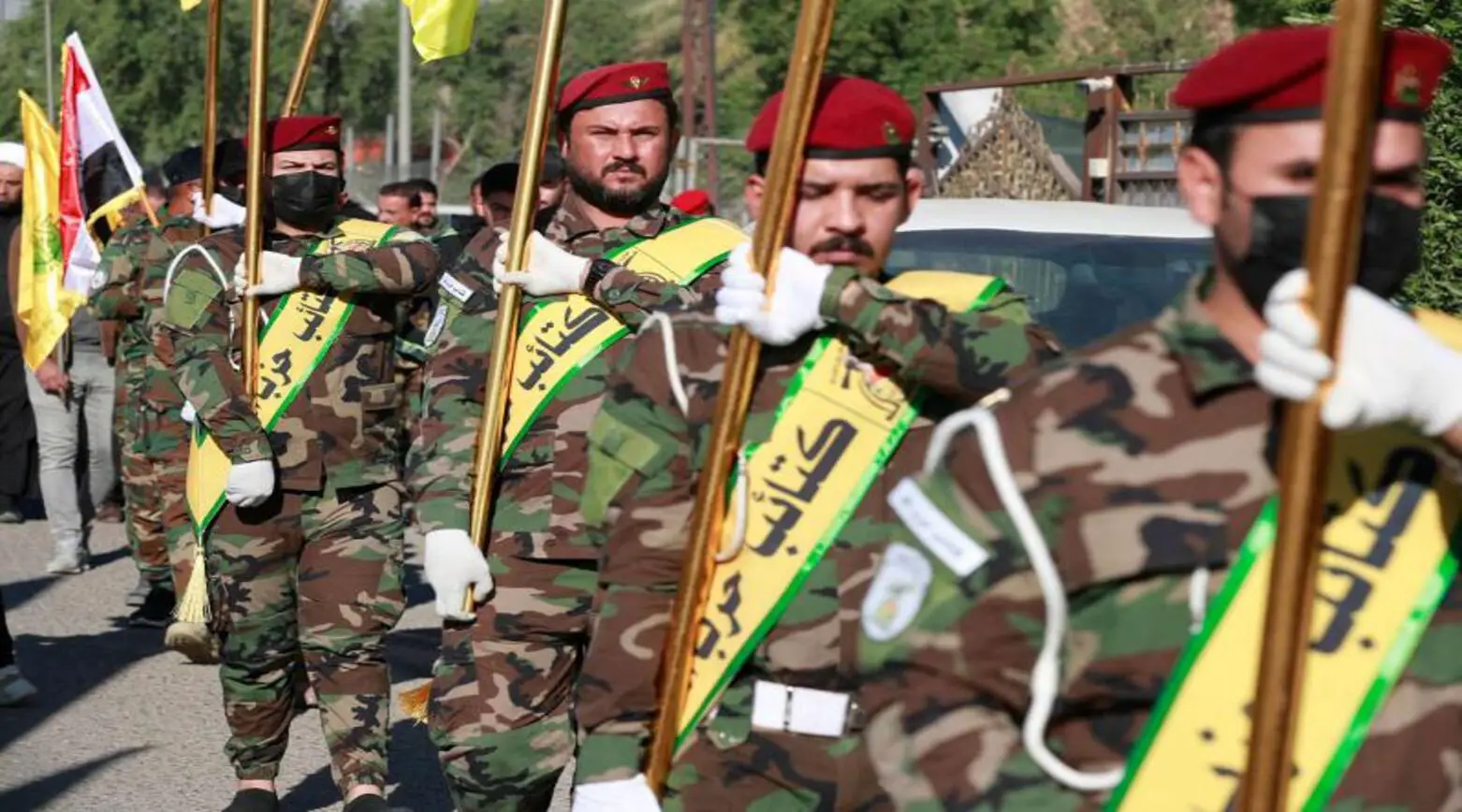Strong Iranian Influence in Iraq: New York Times
Kata’ib Hizbollah uses the area “to assemble drones and retrofit rockets, with parts largely obtained from Iran,” the Times said, and “those weapons have then been distributed for use in attacks by Iranian-linked groups across the Middle East."

WASHINGTON DC, United States (Kurdistan 24) – In a major article published on Saturday, The New York Times described Iran’s deep and extensive influence in Iraq.
The report focused on Iran’s support for Shi’a militias in Iraq, above all Kata’ib Hizbollah, and the territory that the militia controls—an area known as Jurf al-Nasr (formerly Jurf al-Sakhr.)
In Jurf al-Sakhr, Kata’ib Hizbollah produces missiles and rockets which are used by “Iranian-linked groups across the Middle East,” the Times said.
The article also quoted the veteran Kurdish politician, Hoshyar Zebari, who was Iraq’s first Foreign Minister after the overthrow of Saddam Hussein, serving in that position for a decade, before assuming the posts of Deputy Prime Minister and Finance Minister. He is now a senior figure in the Kurdistan Democratic Party (KDP.)
Iran is “the predominant influence in Iraq today,” Zebari told the Times, and its interests affect “every sector of the security forces, the military, the provincial governors.”
Among the vehicles for Iran’s exercise of influence is a network of proxy militias. With the war between Israel and Hamas, those militias have stepped up their attacks on U.S. targets in Iraq, including the U.S. embassy, as well as in northeast Syria.
Read More: U.S. Cites Iran, as Militias Attack Numerous Sites in the Kurdistan Region, Iraq, and Syria
As Washington’s highly-regarded Institute for the Study of War has summarized this situation,“Iran and its so-called ‘Axis of Resistance’ are exploiting the Israel-Hamas war to support their objective of expelling US forces from the Middle East.”
Kata’ib Hizbollah and Jurf al-Nasr
Jurf al-Nasr (formerly Jurf al-Sakhr) is located in a sliver of Sunni Arab territory that runs through a predominantly Shi’ite region. It lies on the Euphrates River, some 50 kilometers south of Baghdad, and is roughly twice the size of San Francisco.
Jurf al-Nasr was once largely farmland, but under the control of Kata’ib Hizbollah, it has been made a closed region, with militia members manning checkpoints around its perimeter. In effect, Jurf al-Nasr now functions as a “forward operating base for Iran,” the Times said.
Kata’ib Hizbollah uses the area “to assemble drones and retrofit rockets, with parts largely obtained from Iran,” senior military and intelligence officials told the paper.
“Those weapons have then been distributed for use in attacks by Iranian-linked groups across the Middle East,” it added.
The U.S., as well as Iraq, presumably, have long known about this. The Times cited Gen. Kenneth McKenzie, who, before retiring in 2022, was head of CENTCOM.
“They have rockets, mortars, missiles,” McKenzie told the Times. He did not know the exact ranges of those weapons now, but in 2020—“when he oversaw the last U.S. effort to reduce the arsenal—some could reach targets in Jordan, Syria, and Saudi Arabia,” it said.
Such knowledge, as related by McKenzie, underscores the artifice behind the Biden administration’s reluctance, until two days ago, to identify those behind the attacks on U.S. forces in Iraq and Syria and characterize them as Iranian-backed.
Read More: U.S. Cites Iran, as Militias Attack Numerous Sites in the Kurdistan Region, Iraq, and Syria
The Militias’ Response
On Nov. 20, the U.S. responded to what it described as a “close-range ballistic missile” attack on Ain al-Asad airbase in western Iraq’s Anbar province, with two strikes on Kata’ib Hizbollah sites in Iraq, one of which was in Jurf al-Nasr.
Read More: U.S. responds to ‘close-range ballistic missile’ attack with strikes in Iraq
It was the first time that the Biden administration retaliated to a strike on its forces in Iraq with a strike in Iraq. Until that point, the administration had worried that retaliating in Iraq might lead the Baghdad government to order U.S. troops out of Iraq.
That did not happen. Rather, what followed was a week of calm—until Nov. 29, when militia attacks resumed in Syria and Dec. 3, when they resumed in Iraq.
Indeed, a spate of attacks occurred very recently—on Friday. They included mortar fire targeting the U.S. embassy, as well as an assault by at least five drones on Erbil International Airport, which, in addition to its civilian functions, hosts troops from the anti-ISIS Coalition.
The unprecedented flurry of assaults prompted the Biden administration later that day to say clearly that pro-Iranian militias were responsible, and it named Kata’ib Hizbollah in particular.
No further attacks occurred on Saturday, but Kata’ib Hizbollah did publish a defiant statement.
It asserted, “Our operations against America in Iraq will continue until the last American soldier leaves Iraq.” It also threatened the U.S. embassy, stating, “Yesterday’s attacks were just the beginning” and “more attacks will come.”
Notably, the statement said nothing about the war in Gaza! That is just an excuse and a cover for what it wants to do anyhow, even as the Biden administration seemed to accept it.
The alternative would be for the administration to acknowledge that it had erred in its initial assumptions about Tehran, when it seemed to blame the Trump administration for tensions with Iran and thought it could repair relations with that country by renewing the Obama-era nuclear deal.